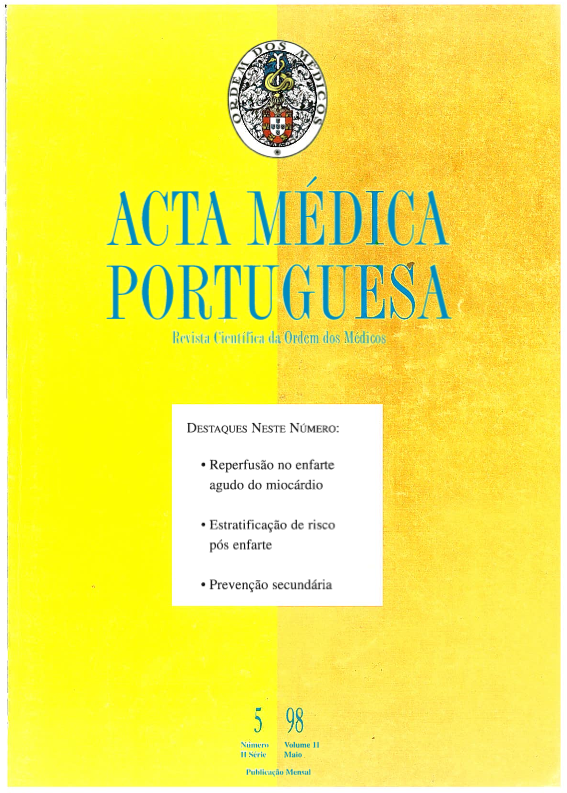Post-myocardial infarct risk stratification.
DOI:
https://doi.org/10.20344/amp.2255Abstract
The aim of performing diagnostic tests in patients with myocardial infarction before hospital discharge is to identify those with a high risk of recurrence or sudden death. It is convenient to perform these tests before discharge because the risk is higher in the next two months. The assessment of ventricular function is fundamental since it is the best predictor of post-infarction survival. There are many patients in which the combination of clinical, electrocardiographic and enzymatic data present a strong argument to assume that the loss of contractile myocardium was relatively small. In the remaining patients, the use of non invasive techniques, or even contrast ventriculography, is indispensable. The choice of method, be it exercise electrocardiography, stress echocardiography, rest or stress scintigraphy and coronary ventriculography, depends greatly on the resources available and the degree of reliability offered by the team performing the method. The sub-maximal exercise test performed before hospital discharge in patients with an uncomplicated infarction has already an undisputed role in determining prognosis. Stress echocardiography and stress or exercise thallium scintigraphy have a greater predictive value than the sub-maximum stress test. Their greatest advantage probably lies in the possibility of identifying the patients with a low risk of future cardiac events. In many centers, coronary angiography and ventriculography are preferred with out "wasting" time with non invasive methods, which, although more economical, give only indirect information. The existence of complex ventricular arrhythmias is an independent prognostic factor concerning mortality. Ambulatory electrocardiography and electrophysiological studies are the methods of choice for their detection, the latter having become routine as their value has increased due to the availability of implantable automatic defibrillators.Downloads
Downloads
How to Cite
Issue
Section
License
All the articles published in the AMP are open access and comply with the requirements of funding agencies or academic institutions. The AMP is governed by the terms of the Creative Commons ‘Attribution – Non-Commercial Use - (CC-BY-NC)’ license, regarding the use by third parties.
It is the author’s responsibility to obtain approval for the reproduction of figures, tables, etc. from other publications.
Upon acceptance of an article for publication, the authors will be asked to complete the ICMJE “Copyright Liability and Copyright Sharing Statement “(http://www.actamedicaportuguesa.com/info/AMP-NormasPublicacao.pdf) and the “Declaration of Potential Conflicts of Interest” (http:// www.icmje.org/conflicts-of-interest). An e-mail will be sent to the corresponding author to acknowledge receipt of the manuscript.
After publication, the authors are authorised to make their articles available in repositories of their institutions of origin, as long as they always mention where they were published and according to the Creative Commons license.









